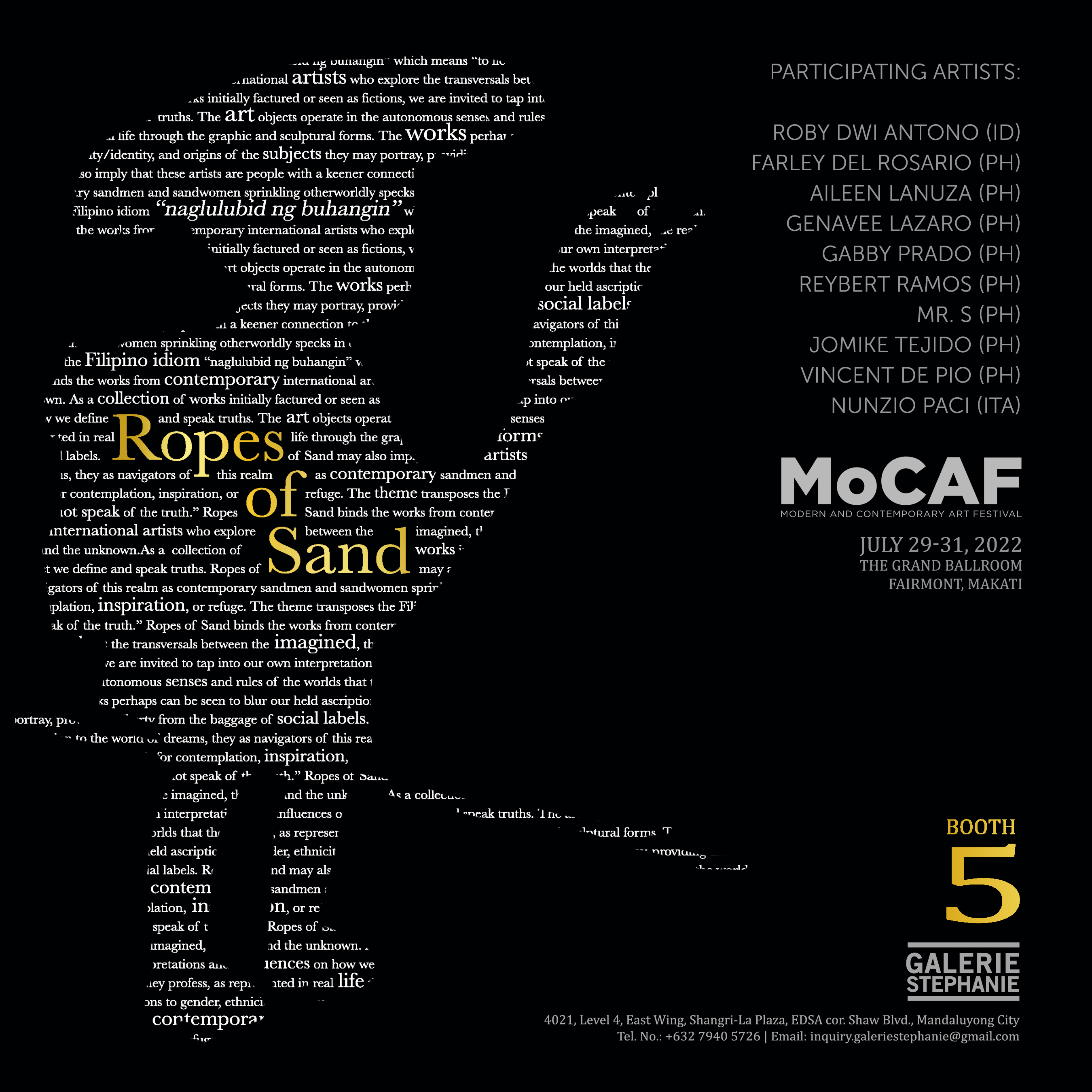The theme is transliterated from the Filipino idiom naglulubid ng buhangin which means “to lie”,“to not speak of the truth.” This correlates to the Western figure of speech telling us of something not holding well, that there is weakness perceived in the presented connection of things or gathering of sensibilities. The Galerie Stephanie exhibition Ropes of Sand conversely binds the works from contemporary international artists exploring the fragile transversals among the imagined, the perceptible, and the unknown. As a collection factured from the artists’ (re)presentations of their lifeways, advocacies or convictions, or experiences, we are invited to tap into our own interpretations and influences on how we define and speak truths. This MoCAF presentation is a panorama scrubbing from figuration to non-figuration, or in reverse, suggesting that the contemporary audience can pinpoint a preferred point of view among the spectrum of visual language and materiality that each artist masters to expand or complicate for the possibility of uncharted experiences and alternative meanings.
Each Ropes of Sand work is a speech act made through underpaintings and layers of varying drying times, or weighed and waited clay, meshing with the good and bad moments of the creator’s day-to-day inflections. Each piece was an output governed by its artist’s attention over his own time, space, and materials in relation to needs coming from outside his/her control. An art object operates in the autonomous senses and rules of the world, professed graphically/sculpturally to us as a piece and a specimen of curiosity through its final form exhibited in the austere space at the MoCAF. The works perhaps can be seen to blur our held ascriptions to gender, ethnicity/identity, or the origins of the subjects they may portray, providing us liberty from the baggage of conventional social labels or long-held beliefs that should already have been dispossessed by us.
A particular piece of work in Ropes of Sand is a world held on itself, carefully manipulated by each artist’s measure and understanding of their chosen language of Art that they are continuously refining on: Gabby, Jomike, and Genavee assure us that no matter how unstable the currents and currencies of life are –among its craziness and hurly-burlies– we can always come home to the basic patterns and molds of the big picture in order for us to be able look at ourselves as one of the many dots or grains in the community or in the cosmos. Roby, Reybert, Farley, Mr. S, and Vincent on the other hand provide us the groundwork for scenes, telling us that amid the autocracy of big events, we may have the ability or privilege to take a gaze at what’s happening here and now, advising us to slow down and challenge ourselves to search for details that might help us know more about what we can still do or act upon. Aileen and Nunzio’s works likewise use figuration of uncertainties or oddities that form part of our understanding of what’s already there. But through limning the outlines and relying less on hues, we get to understand structure and temperance beyond the assumed shades of the icons prevailing on the visual plane if they are not inhaled by the audience as parts of one full subject.
Ropes of Sand puts forward that these artists are people with a keener connection to the world of dreams or nightmares. The artists are navigators of the realm of images as contemporary sandmen and -women, sprinkling otherworldly specks and winks in our eyes and on the palms of our hands, hoping that their works can be provisions for more questions as we live with each other, or a refuge from enforced toils, or the inspiration for tangible action and change to dynamically move forward and away from friable conditions.
curated by Randel Urbano
–


